Color Psychology in Interior Design:
Can the Psychology of Color
Help You Decorate Your Home?
Yes, color psychology can help you create a desired mood in interior design.
However, many psychological effects of color are based on cultural rules or personal life experiences. Did you know, for example, that pink was considered the "correct" color for American baby boys as recently as the 1920s and 1930s? (And yes, blue was for baby girls!)
Click a color swatch for the psychological effects of specific colors:
|
Psychological Effects Of The Color White |
Psychological Effects Of The Color Grey |
Psychological Effects Of The Color Black |
|
Psychological Effects Of The Color Brown |
Psychological Effects Of The Color Orange |
Psychological Effects Of The Color Red |
|
Psychological Effects Of The Color Pink |
Psychological Effects Of The Color Purple |
Psychological Effects Of The Color Blue |
Color Psychology: Overview & Basic Tips

Our psychological responses to color aren't necessarily hardwired into our system.
So don't worry about 'getting it right' - this is definitely not an exact science!
No color has scientifically proven, long-term effects that are the same for all humans.
Still, research does show that we all share some basic responses to color. So when you set out to decorate your home, color psychology can provide you with a general list of the most promising color candidates for the effects you want to achieve.
Applying Color Psychology to Your Home
Here are some general guidelines for applying the psychology of color in interior design and decorating:
- Saturated colors from the yellow/orange/red (='warm') section of the color wheel tend to raise our energy levels, while colors from the 'cool' blue/green section calm us down, both physically and emotionally.
- This is not always true for less saturate shades/tints of these colors. Compare the vibrant, put-your-eyes-out geranium red to the muted brick red (with yellow, brown and gray in it): The desaturated brick color is much gentler on the nerves. (And what's your response to that bubble-gum tint?)

- Dark colors generally make a room feel smaller; it doesn't really matter if they are 'warm' or 'cool' colors.
- However, once you get to the lighter tones, the warmth of a color does matter. Blues, greens and cool greys are 'receding' colors (they tend to make a room look larger) while red, yellow, orange and warm browns are 'advancing' colors.
- Some color combinations are loved almost universally; for example, blue combined with neutrals (blue is the majority's favorite color). For more information about creating great color schemes, check out the article about Choosing Color Schemes.
- Neutral color schemes are generally found relaxing (and they can look extremely stylish!) - check out my free e-book for neutral-color decorating tips and info!
- Colors can be used for healing purposes, so you could try using them in parts of your home to affect your physical or emotional well-being. For more, have a look at this list of color properties from renowned healer, Donna Eden.
- Click here for more info about the psychological effects of specific colors!
Color Affects Different People Differently
Even though we humans respond to colors in similar ways, the concrete psychological
effects of any given color won't necessarily be the same for you as for your sister.
Or for someone from the other side of the globe, for that matter. Here's why:
- No two people see color in exactly the same way; our eyes are all slightly different. Using color psychology when you decorate your home won't guarantee that everyone who shares that space with you will see, feel and respond to the color as you would like them to.
- Different cultures create different 'meanings' for colors. These are traditions, not 'the truth'. Nevertheless, your thoughts about a color do influence your response to it. For example, some Asian cultures associate the color white with death and mourning, while Christians in the Western Hemisphere use it for christening and wedding dresses (there's a bit more to this, but I wanted to make a quick point).
- We experience our lives 'in color'. Colors will, in turn, bring back personal memories and the feelings we associate with them (Grandfather's garden, a trip to the seaside, a favorite dress...). When you're looking to apply color psychology to the interior design of your home, you could draw on these memories and experiences to create a feel-good home.
3 Steps For Using Color Psychology In Your Home
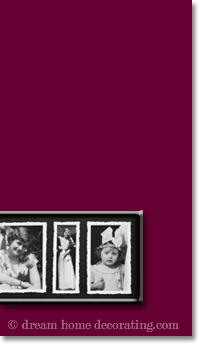
If you share a home with others, choosing home decorating colors can be a very interesting process ...
... because people tend to disagree vehemently on what colors look good (and make them feel good) and which ones don't.
Step 1:
Before you settle on an interior color scheme, be clear about how you will use a room, and at which times of the day.
The lighting makes a big difference to how a color looks, and how it affects you.
For example, if you're using your bedroom only at night (and in soft lamplight), painting the walls a deep velvety magenta can create a really luxurious effect. However, the color won't look particularly great on a bright, sunny morning.
And if you're using this room to work in during the day, you might find 'deep magenta' rather suffocating.
Step 2:
Ask yourself, how do I want to feel when I'm in this room? - Calm and focused? Energized? Relaxed? Secure? Then, find a choice of colors that can promote these moods.
Step 3:
Trim your color choices down to those that work with your furniture and non-negotiable elements (e.g. curtains, bed spread, wall art, special items - more about this here!)
Finally ...
Don't believe everything you read about color psychology in interior design. Take it with a pinch, or rather, a fistful of salt. As a science, the psychology of color (in interior design and elsewhere) is very young.
Trust your own senses. It's what you enjoy that counts.
"If someone has a brown lounge ...
... what does that mean about them?"
I was recently contacted by a furniture merchant who was looking for someone to help them generate media attention by discussing color psychology in the context of people's furniture choices and decorating colors. (The above question was given as an example of how they wanted to use the psychology of color in their marketing).
Here's my current thinking about this kind of approach:
1. As far as I know, color psychology experts are not saying that all hues, tints and shades of a color will elicit the exact same response in all humans.
If you want to make meaningful statements about color psychology, you need to be specific about the exact hue you're talking about. What kind of brown? Double espresso or café au lait? Reddish, yellowish, greenish, purplish?
There are more hues of brown than you can shake a paintbrush at, and you'll find lots of people who like one type of brown hues (e.g. deep mahogany) and hate another (e.g. aged yellowish oak).
In other words, the question "If someone has a brown lounge, what does that mean about them?" is a very reduced, pop 'color psychology test' question.
2. People's responses to particular colors don't "mean" anything
about these people.
People are attracted to colors for different reasons - memories, previous experiences, the way a color makes them look, or the way it combines with other colors they already have in their home (hardly anyone's lounge is just "brown").
I have not come across any serious color psychology researcher who claims that people's general color preferences "mean" something about those people (to say nothing of cultural differences).
If a furniture merchant claimed to know what my personal color choices "mean" about me, or if they used some kind of "expert" in color and psychology to make that claim - I would give them a wide berth and buy my furniture elsewhere :-)
So, to sum up: If you have a brown lounge, what does that mean about you? Zilch. Nada. Absolutely zippo.
Yet to find the information you're looking for? Type a word or phrase into the search box below:
Study the Psychological Effects of Specific Colors
Return from Color Psychology to the Dream Home Decorating Homepage

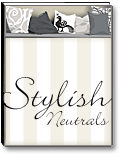
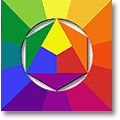
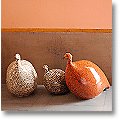
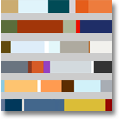
New! Comments
Have your say about what you just read! Leave me a comment in the box below.